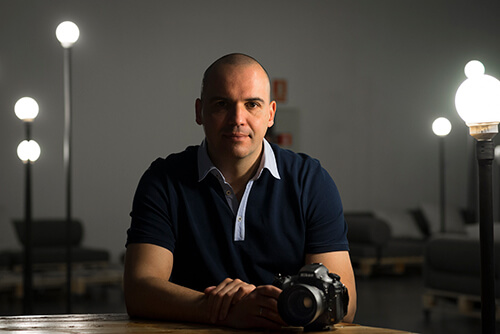Born in Spain in 1975. Since the year 2012 uses the object like expression way. This Poet of the Prosaic made the leap from social networking to the galleries in a few months' time. His creativity has not gone unnoticed in Spain as well as the foreign media, having his work published in several countries in the world. He has made a number of individual exhibitions and taken part in different collective exhibits, in addition to diverse art fairs. His lens is profoundly irreverent with the real: it seeks to transform and stamp objects with new identities; it challenges the obvious, and pays heed to the grandeur of the everyday. The bareness of his photography endows objects with a leading role, while they are stripped of their essence to be reinvented. The artist does not carry out any photographic manipulation on the images. From the minimalist perspective, the inventiveness of his gaze lays claim to another reality.
In 2015 the artist was one of the chosen ones, by the Spanish Embassy, to participate in the "Photo Week Washington D.C.". In 2017, the Contemporary Art Museum of Castilla León in Spain (MUSAC) selected three of his pieces for the "Constellations" exhibition, experimental poetry in Spain (1963-2016), where for the first time, the presence of visual and experimental poetry in Spain from the 1960s to the present is addressed.
During last years the artist has participated in some Festivals of photography, in Spain and abroad as Photo Week D.C. in Washington (2015), Photo Romania Festival (2015), Photometria Festival in Greece (2016), Festival of the light in Argentina (2016), Bucharest Foto Week (2016), Addis Foto Fest in Ethiopia (2016), Uppsala Foto Festival in Sweden (2017) and Yangon Photo Festival in Myanmar (2018).
In 2018 presented his exhibition "Diálo2" in the Barjola's Museum in Spain together with one the most important visual poets of the 20th century in Spain, Joan Brossa."
